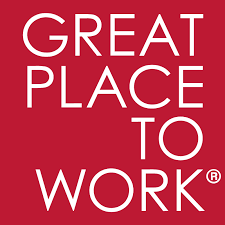
Can a High Trust Culture Enhance Your Business Performance?
|
Ron Grey, PhD, Senior Vice President, Great Place to Work® Institute, Canada bh in Brief Great Place to Work® is an international organization dedicated to building a better world by helping organizations become Great Places to Work FOR ALL. Operating out of 57 countries, GPTW assesses workplace cultures by integrating employees’ workplace experience, through its Trust Index® employee survey, with evaluations of organizations’ workplace policies, programs and practices, through its Culture Audit©. Results from this world’s largest annual workplace study are applied to produce global lists of Best Workplaces published in Fortune Magazine and the Globe and Mail in North America and leading media partners around the world. Organizations meeting GPTW’s threshold standards are Great Place to Work® Certified™.
www.greatplacetowork.ca
|
Looking to the future, success in business will depend on people, and advanced analytics can help lead the way. Organizations that create and sustain a high trust culture will reap the benefits of stronger and more sustained business performance results. Certainly seems intuitive, but what are the facts? What is a High Trust Culture?Based on over 30 years of research and consulting experience, the Great Place to Work® model defines high trust cultures in terms of relationships – between management and employees, employees and their jobs, and employees and their colleagues. High trust cultures are characterized by strong leadership credibility, respect for employees, fairness of treatment, camaraderie and pride. The Importance of Culture for H&MGPTW assesses corporate culture through a combination of our proprietary Trust Index© employee survey and Culture Audit© of people management policies, programs and practices. Recently, Great Place to Work® (GPTW) carried out empirical research to determine how high trust workplace cultures influence key performance indicators (KPIs) like sales, customer service, employee turnover, illness and productivity. We partnered with H&M Canada* on a customized research study to determine the nature and scope of culture impacts on business performance. Over 3,200 employees at 83 stores across Canada were surveyed on our Trust Index©. For H&M HR, understanding the importance of high trust culture was simple: employees are more engaged and drive results…right? However, H&M’s leadership and executive team wanted “proof” that their culture really drives bottom line results when it comes to their KPIs. How Do High Trust Cultures Impact KPIs?Using advanced analytics, our research confirmed the tangible business impacts of high trust cultures: stores with high trust cultures significantly outperformed the rest in sales and productivity gains. More specifically:
On a $100 MM revenue budget, for example, these results translate into $8MM in sales falling to the bottom line from the strongest trust culture stores vs. a $1MM deficit from the lowest trust culture stores! This dramatic differential underscores the magnitude of opportunities for achieving performance gains by shifting more and more low-trust culture stores upward! One Size Doesn’t Fit AllNot all aspects of high trust cultures were found to have the same impact on different KPIs. Like so many other things in life, it all depends. Different aspects of high trust cultures were found to be more critical in driving sales growth vs. productivity vs. turnover vs. customer service, etc. Top Seven High Trust Culture DriversAt the same time, our advanced analytics identified seven core attributes of high trust cultures that have the most significant, pervasive impact in influencing the most KPIs at H&M, namely:
While our research identified precise culture change formulae for predicting and optimizing each specific KPI, these seven core drivers provide a powerful overarching framework for guiding high impact high trust culture change. Analytics can really lead the way. bh
|

